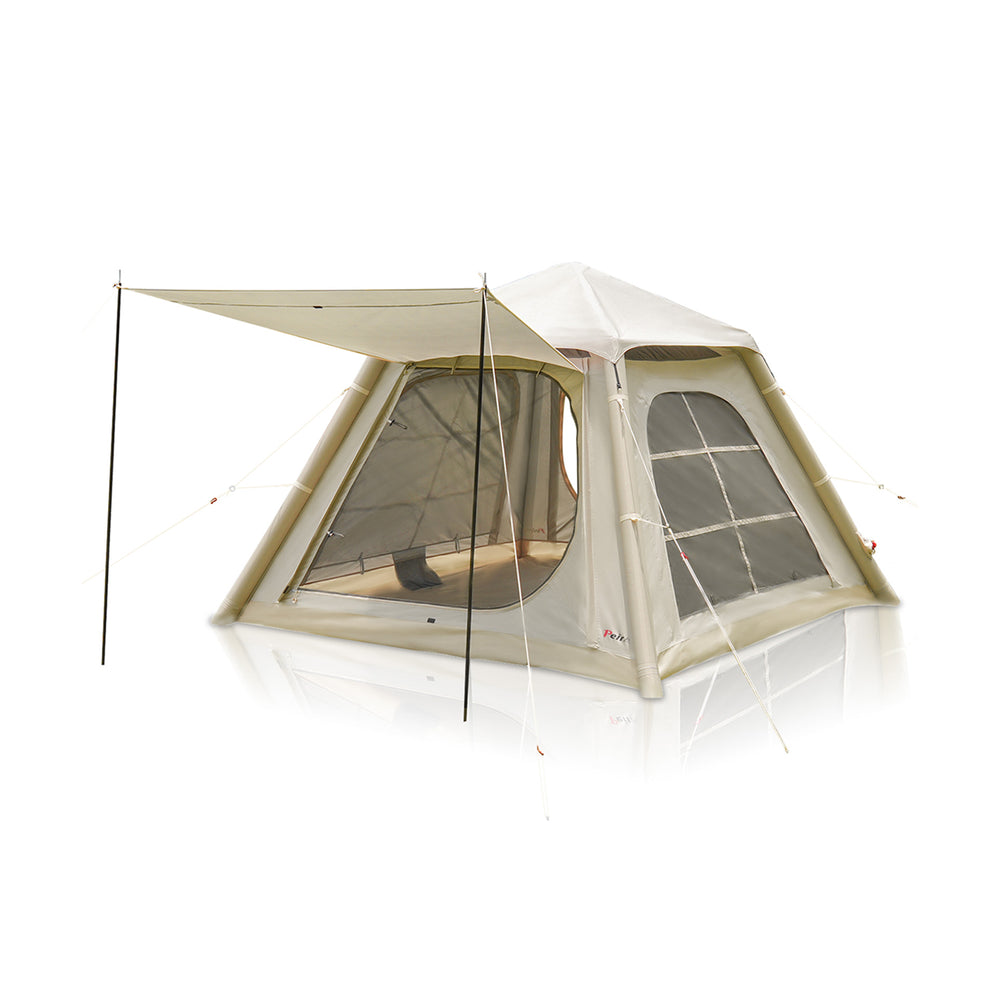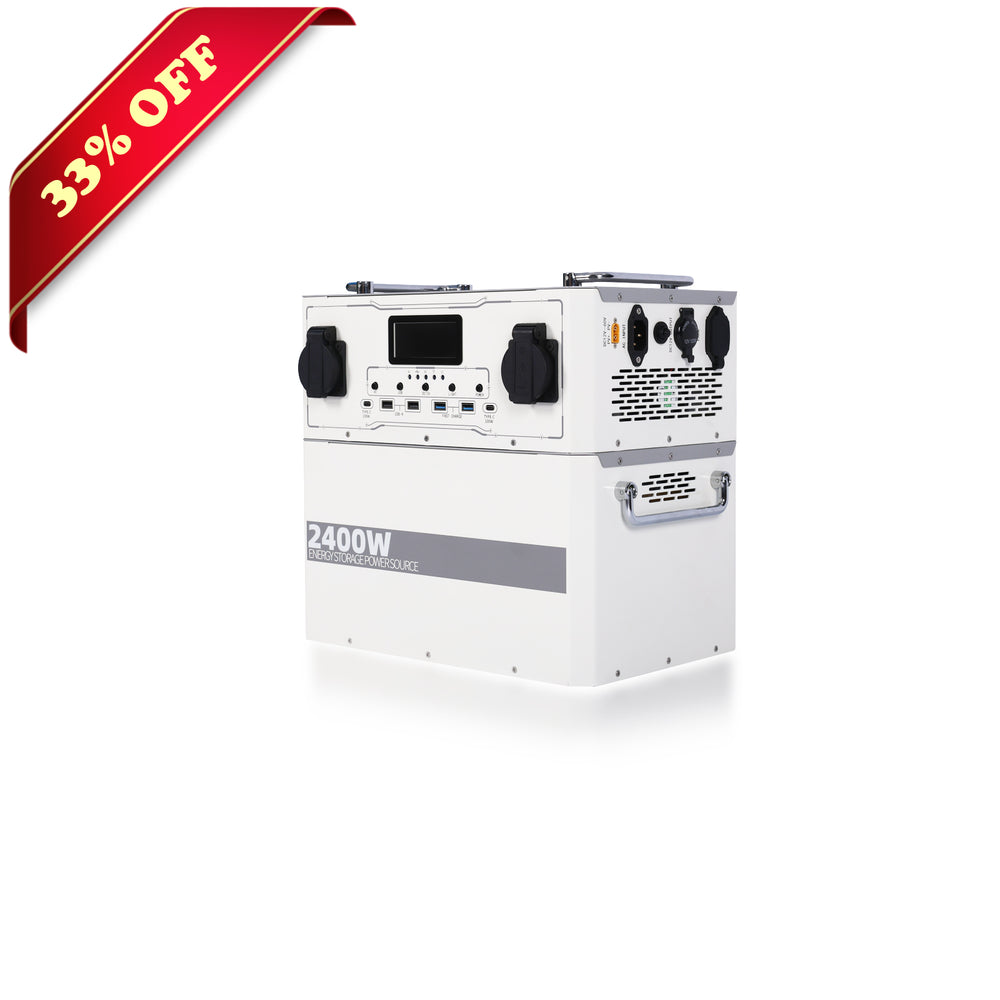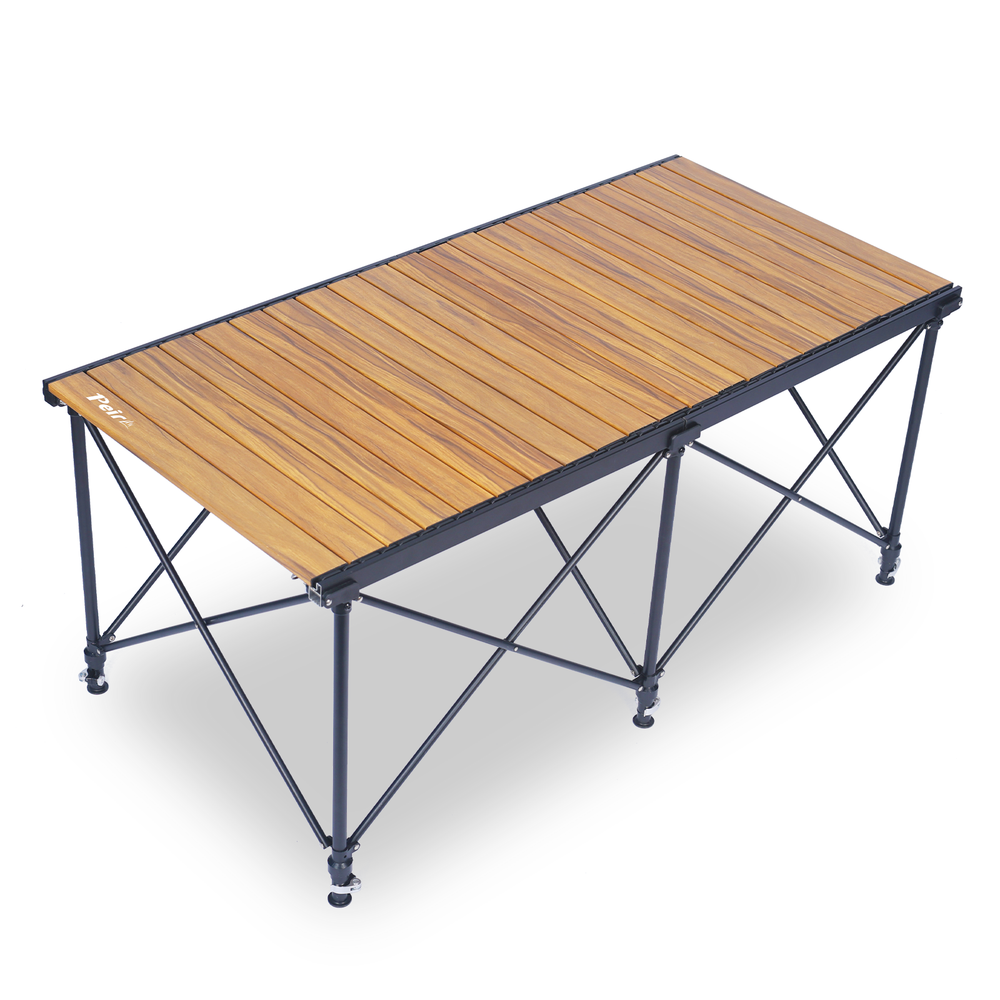Tent selection has become an important step over the years due to the increase in the popularity of camping and other outdoor activities. And rightly so, because the material used in making the tent determines the overall experience of the camping session. Fabrics used in tents directly affect the durability of that tent, its resistance to weather elements, the weight of the tent as well as its breathability.
In this article, we will discuss the various types of materials used in tent construction, their advantages, and most importantly factors to consider when purchasing a tent.
Types Of Tent Materials
When it comes to tent fabrics, there are many options and types available, and each of them fits a certain purpose. Here are the main materials commonly used for tent construction:
Polyester
In tents, polyester is the most commonly used material and is mostly popular for recreational camping tents. The material is preferred because it is cheap, strong, and resists all forms of weather conditions.
Advantages
- UV resistance: Polyester is more resistant to UV rays and can stand for long periods in the sun.
- Water resistance: Polyester is usually laminated by a waterproof layer; polyurethane(PU), to make the fabric waterproof. This coating also serves to make tents rainproof.
- Low stretch: Polyester material also has low elasticity when it is wet, which allows the tent structure to maintain its shape.
- Affordable: Polyester tents tend to be cheaper than nylon ones, and, therefore, ideal for families on a budget.
Disadvantages
- Less breathable: Polyester material for tents might not provide much breathability which causes condensation on the inner side of tents.
- Heavy: Polyester is heavier than nylon and that's why it is not suitable for backpacking.
Nylon
Nylon is widely used in making lightweight tents, especially for hiking or mountain climbing.
Advantages
- Lightweight: Nylon is much lighter than polyester. This makes it the most suitable fabric, especially for tracking and backpacking.
- Strong and durable: Nylon offers a relatively higher strength-to-weight ratio, a quality that brings good strength to the product without increasing its weight.
- Waterproof coatings: Nylon is closely covered with Silicon or PU to make it waterproof.
Disadvantages
- UV sensitivity: Nylon has less durability when exposed to sunlight. It would not last as long if it is placed under direct sunlight.
- De-shapping: One must note that nylon gets stretched when wet. Hence, the structure of the tent is distorted during periods of rain.
Canvas (Cotton)
A Canvas tent is an old-style tent that has been serving campers for years now. They are considered to be more strong and ventilated, which makes them suitable for longer camping trips.
Advantages
- Breathability: They are highly breathable, thus minimizing moisture accumulation inside the tent.
- Durability: They are characterized by their high durability, and they can withstand all unfavorable weather conditions.
- Temperature regulation: Canvas retains cool temperatures during sunny and hot conditions, and will retain heat in cold conditions as it acts as an insulator.
Disadvantages
- Heavy and balky: Canvas is a very heavy material when compared to synthetic materials. It is very difficult to carry canvas materials for backpacking.
- Requires maintenance: In the case of canvas, this material needs to be well-dried before storing it to avoid molding.
- Expensive: Compared to the synthesized types of tents, they are usually costly because the material is strong and of quality fabric.
Poly-cotton
Poly-cotton is a combination of polyester and cotton. Both of these fibers have great characteristics individually. This combination makes poly-cotton tents a kind of in-between that offers the toughness of Polyester and the breathability of the cotton.
Advantages
- Improved breathability: It is quite breathable than polyester, which helps in handling temperature within the tent.
- Durability: Poly-cotton is a better fit for use than pure polyester as it can handle wear and tear and adverse conditions.
- Less prone to stretching: Unlike pure cotton fabrics, poly-cotton does not stretch when wet and will not have problems with sagging.
Disadvantages
- Heavierr than polyester: In terms of weight, poly-cotton is lighter than Canvas but still heavier than fully synthetic fabrics.
- Higher cost: Poly cottons are generally more costly than polyesters but lower in cost than pure Canvas once.
Mesh
Mesh is a fine, porous fabric that is usually created from natural fibers such as nylon or polyester. It is frequently used on the windows of tents, doors, and internal partitions to provide sufficient air circulation, with an insect-repelling factor.
Advantages
- Enhanced ventilation: Mesh ventilation creates space for air circulation - it prevents humidity and maintains a suitable temperature inside the tent.
- Insect protection: Mesh serves as an insect screen, so people can breathe fresh air while camping without being bothered by insects.
- Lightweight: Mesh offers almost no additional weight to the total load, so it is perfect for lightweight hiking.
Disadvantages
- Limited weather protection: The Mesh is not weatherproof, it is not even wind resistant, therefore it requires a rainfly or any other cover.
- Less-durable: Mesh is comparatively fragile and can be easily torn by any kind of material.
PVC (Polyvinyl Chloride)
PVC is a common synthetic material used for tent floors and rainfly coverings. It is fully waterproof and resistant to wear and tear. It is designed for tents that come into contact with water or tough ground.
Advantages
- Waterproofing: The waterproof fabric of PVC prevents water seepage into the tent, keeping the inside of the tent dry.
- Durability: PVC is also very durable in conditions where there are likely to be many abrasions or tearing such as the tent floor.
- Easy to clean: PVC can be cleaned using a wet wipe, which makes it perfect for areas where one may experience mud or moisture problems.
Disadvantages
- Heavy: PVC also provides extra weight to the tent, so it will not be ideal for use in ultralight or backpacking conditions.
- Poor breakability: PVC is completely impermeable to air and may lead to condensation problems if used extensively without proper ventilation.
Coatings On Tent Fabrics
Most of the tent fabrics are further treated to add to their functional properties, including resistance to water penetration, protection against UV radiation, and durability.
Polyurethane (PU) Coating
PU coatings are usually applied on polyester and nylon types of tents to enhance water resistance in these tents. A tent with PU coating can better withstand rain even though the coating will deteriorate with time.
Pros
- Good waterproofing: PU coatings can form a water-resistant barrier.
- Affordable: A major advantage of PU coating is that they are relatively affordable and, ideal for budget-conscious buyers.
Cons
- Less durable our time: PU coatings can wear out and begin to peel away in sunlight after a while.
- Environmental impact: Some PU coatings have some problems because the chemicals used in this process are not environmentally friendly.
Silicon Coating
Silicon coatings are mostly used in nylon fabrics and they are good in terms of sealant and improved UV protection. Silicone-coated nylon is popular with the name ‘silnylon’.
Pros
- Superior waterproofing: Silicon coatings possess high water vapor permeability as well as high resistance to water penetration.
- UV protection: Silicon makes it resistant to UV rays thereby increasing the lifespan of the tent.
- Durability: Silicon-coated fabrics have a longer lifespan because silicon does not become brittle.
- Higher cost: Silicon-coated fabrics generally cost more than other fabrics.
- Difficult to repair: On the downside, most silicone-coated tents are relatively more difficult to repair, if they get damaged.
Factors To Consider When Choosing Tent Materials
Selecting the right material depends on various factors, including type of camping, climate, and personal preferences. Here is what to keep in mind:
Camping Environment And Weather Conditions
Considered the environment and typical weather of your camping destination:
- Rainy conditions: When choosing the material for high-rain areas, it is better to pay particular attention to waterproofing, such as PU-coated polyester or Silicon-coated nylon.
- Windy environments: In windy regions, it is preferable to use dense materials such as Canvas or thick polyester to oppose these gusts.
- Hot or humid conditions: Canvas and poly-cotton are better suited to breathability than PVC, especially in hot and humid climates.
Weight And Portability
For backpacking, nylon is perfect as it is light and easy to manage, while polyester and poly-cotton are somewhat heavier. Poly-cotton and polyester are recommended for car camping or very long trips because of their weight.
Budget
Polyester with PU coatings is typically used in budget tents: this is suitable for frequent campers.
Durability And Longevity
For more often or hard conditions camping, you should use materials like Canvas, poly-cotton, or silicone-coated nylon.
Special Considerations For Tent Fabrics
There are other things to consider that determine the performance of a tent such as waterproof coating, UV protectiveness, and denier of a fabric.
Waterproof Ratings
Weather resistance is a crucial characteristic so it will be a problem in regions with lots of precipitation. The waterproof rating, measured in millimeters (mm), indicates how much the tent resists water:
- 1500mm: It is waterproof, to the extent that it can handle light rain.
- 3000mm: Medium resistance, it is suitable for medium rain levels.
- 5000mm and above: They can withstand heavy rain and excessive exposure to rain.
UV resistance
UV radiation affects the durability of the fabric. Such as nylon and polyester tents will degrade in UV lights. UV resistance can be enhanced by special kinds of silicon coatings and special treatments containing UV additives.
Denier (D)
Denier is a measure of fabric thickness and durability:
- 20D to 40D: Such types of fabrics are perfect for ultralight tents.
- 50D to 70D: It is a medium-weight type that can give optimum sturdiness.
- 100D and above: Durable materials, ideal for extended time utilization and unfavorable conditions.
Conclusion
One of the most important things that you have to consider as you select your tent, is the material. For example, some people require lightweight nylon fabric for hiking, while others prefer high-quality Canvas fabric for long-term use.
There is no perfect fabric for your tent, the choice will depend on several factors like the camping conditions, precipitation level, budget, and most importantly your personal preferences.












 Peirhw Inflatable House Tent - Starry Night Love
Peirhw Inflatable House Tent - Starry Night Love
 Peirhw Glamping Tents - Friendship Castle
Peirhw Glamping Tents - Friendship Castle
 Peirhw Inflatable Canopy Tent - Adventurer
Peirhw Inflatable Canopy Tent - Adventurer



 Peirhw Portable Air Conditioner
Peirhw Portable Air Conditioner
 【Advance Sale】Peirhw Portable Power Station 2400W
【Advance Sale】Peirhw Portable Power Station 2400W
 【Advance Sale】Peirhw Portable Power Station 600W
【Advance Sale】Peirhw Portable Power Station 600W





 Peirhw Self Inflating Sleeping Pad
Peirhw Self Inflating Sleeping Pad
 Peirhw Air Mattress (8" Queen Type)
Peirhw Air Mattress (8" Queen Type)
 Peirhw Camping Sleeping Bag
Peirhw Camping Sleeping Bag


 Peirhw Butterfly-shaped Canopy for Camping
Peirhw Butterfly-shaped Canopy for Camping
 Peirhw Camping Waterproof Canopy (Cannot be Purchased Separately)
Peirhw Camping Waterproof Canopy (Cannot be Purchased Separately)


 Peirhw Outdoor Folding Chairs
Peirhw Outdoor Folding Chairs
 Peirhw Folding Camping Table
Peirhw Folding Camping Table












